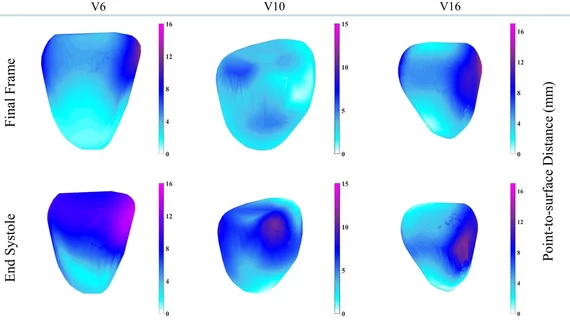Outcomes research proves cardiac MRI’s diagnostic prowess vs. tumors
Data from the first large-scale validation of a cardiovascular magnetic resonance (CMR)-based approach designed to evaluate patients with suspected cardiac tumors, revealed that CMR diagnosis is a strong forcaster of mortality related to clinical risk factors, according to new data published in the European Heart Journal.
The authors found cardiac risk factors were common. Fifty-nine percent of the patients had hypertension, 40% had a history of smoking, 27% had CAD.
“The present study is the largest imaging study to date for the diagnosis of cardiac tumor and confirms the high accuracy of CMR previously reported in smaller cohorts in whom cardiac tumors were known to be present,” wrote lead author Chetan Shenoy, MBBS, MS, with the University of Minnesota Medical Center, Cardiovascular Division, Department of Medicine, and colleagues. “More importantly, we found that CMR also has high accuracy in excluding a cardiac tumor. The significance of this finding is demonstrated by the observation that nearly half the CMRs (385/903) were requested to evaluate a suspected tumor in patients later found to have either no mass or pseudomass.”
Researchers analyzed 935 consecutive adult patients from four centers, Duke University Medical Center, Houston Methodist Hospital, University of Minnesota Medical Center, and Virginia Commonwealth University Medical Center, between January 2003 and December 2014.
The primary endpoint was all-cause mortality.
Forty-six percent of the patients were men, and the mean patient age was 60 years old.
In the study, 3% of the patients had a CMR diagnosis of ‘other,’ and among those patients, 14 had valve-associated vegetations, or else, the possible diagnoses were heterogeneous.
Almost one-third, 32% had a diagnosis of extracardiac malignancy.
Including imaging studies preceding the CMR, echocardiography was the most widespread (78%), followed by computed tomography (25%).
In 903 patients, the CMR diagnosis was no mass in 25% of patients, pseudomass in 16%, thrombus in 16%, benign tumor in 17%, and malignant tumor in 23%, according to the authors.
Meanwhile, patients with pseudomass were similar to those with no mass in almost all characteristics except sex.
In addition, patients in the pseudomass group were disproportionately female 72%, while those with no mass were evenly distributed by sex 50% women.
In the analysis, the most common types of pseudomass were lipomatous hypertrophy of the interatrial septum, prominent epicardial fat, prominent Eustachian valve, prominent crista terminalis, and hiatal hernia, that accounted for 66% of all cases
During a 4.9 years follow-up, 376 patients died.
Shenoy et al. found that CMR diagnosis was accurate in 98.4% of patients compared against the final diagnosis.
Another key finding was that the mortality rates between patients with CMR diagnoses of pseudomass and benign tumor were similar to patients with no mass. Patients who had a malignant tumor and thrombus had a greater mortality risk.
In addition, the CMR diagnosis delivered incremental prognostic value over clinical factors including left ventricular ejection fraction, coronary artery disease, and history of extracardiac malignancy, according to the authors.
The authors concluded that the “addition of the CMR diagnosis to a clinical model without the CMR diagnosis demonstrated incremental prognostic value for the whole cohort, and in both sub-cohorts of patients with and without extracardiac malignancy.”
Read the full story here.
